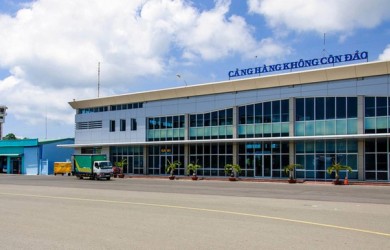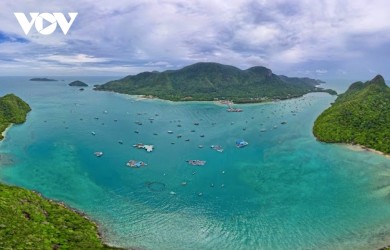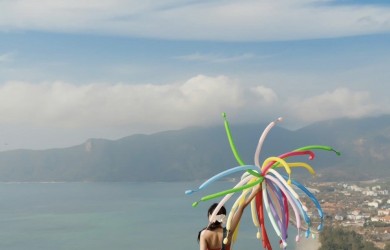Camp I (Phu Tho Camp)
Camp I is also known as: Bagne III (1928-1939), Camp 4 (1945-1953), Bac Ai branch (1960), Camp I (1960), Phu Tho camp (1973), Camp I (from 1975 until now)
For more than the first half of the nineteenth century, this prison camp was synonymous with Con Dao prison (Pénitencier de poulo coudore). Being built early (from the 60s of the nineteenth century), the prison was named Bagne (Banh) I. In 1954, the former government of South Vietnam called it Jail I, Camp I and then changed its name to Republic Camp (April 1960), Camp I (November 1963), Camp II (1964), and Phu Tho Camp (1974). Each change was associated with the ups and downs of the Saigon regime and the development of political prisoners’ movement. The entire campus of the camp is surrounded by four solid walls and has 4 watchtowers at the four corners of the fence.
With a history of more than a century, Bagne I has witnessed all generations of political prisoners from all parts of the country, from the early insurgents against the French, to the leaders of the Can Vuong, Van Than movements, leaders and insurgents of Thai Nguyen (1917), Yen Bai (1930) and especially the party members and revolutionary masses since the birth of Communist Party.
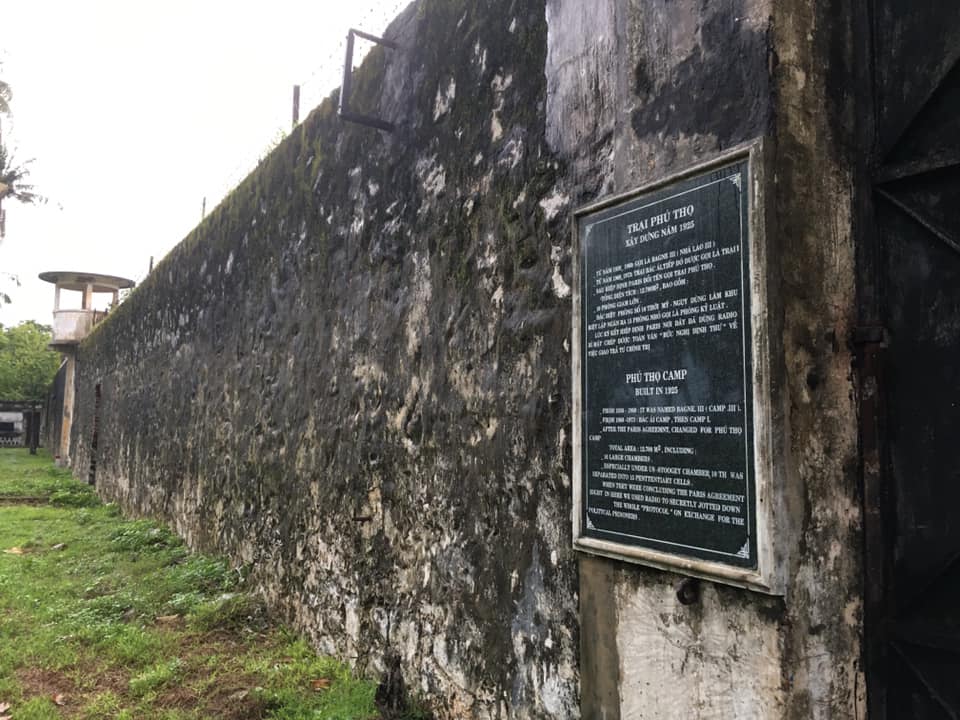
In 1928 when camp 2 (Bagne II) was completed, the French colonialists separated the prisoners carrying political sentences (prohibition, deportation, exile...) to Bagne II. Bagne I was the place where prisoners with forced labor and prison sentences were imprisoned. Among those prisoners, there were a large number of political prisoners carrying these types of sentences. They were held together with other regular prisoners. The French colonialists used Bagne III to detain and isolate new prisoners who were sent to the island before being transferred to other camps in order to prevent news from the mainland from being released, for fear of affecting old prisoners. After that, Bagne III became a place to hold political prisoners who were classified as "dangerous elements", "rebellious", and convicted of sabotage and conspiracy to disrupt peace and order. Prisoners who escaped from prison many times were also imprisoned here.
The first Communist cell in Con Dao prison was established in early 1932 at Bagne I, later developed into the Con Dao Island Committee leading the prisoners' struggle with the outstanding contributions of comrades Nguyen Hoi, Ton Duc Thang, Ngo Gia Tu, Tran Quang Tang, Nguyen Chi Dieu, Le Van Luong, Pham Hung, Nguyen Duy Trinh... Bagne I was also where the Communists held classes on culture, theory, politics, and especially the Leninism class under the training program of the Oriental University (Soviet Union) led by Professor Tran Van Giau.
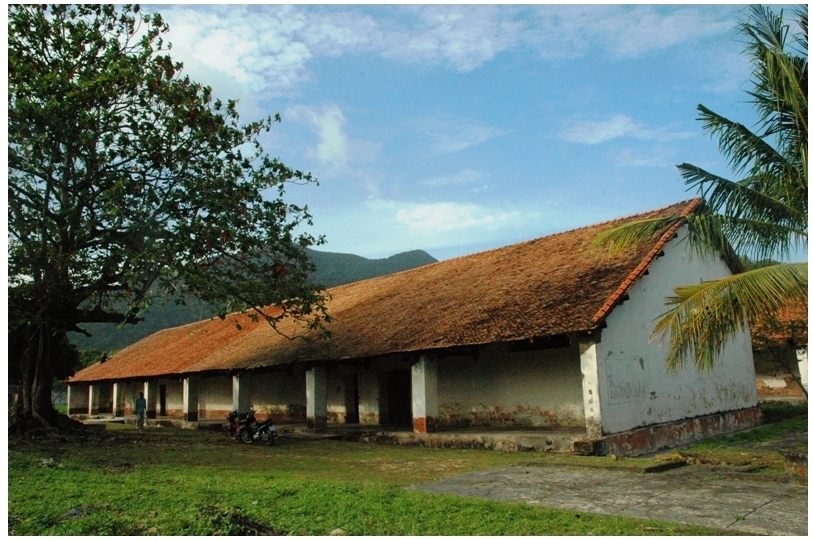
During the period 1939 - 1945, camp I was used to detain people who were arrested before and after the Cochinchina Uprising (1940), including comrades: Le Duan, Le Hong Phong, Duong Bach Mai... The transfers of prisoners from Son La - Hoa Lo who were exiled to the island in the summer of 1944 also took place here, and many comrades were leaders of the Party Committee of Tonkin. Bagne III was one of the harsh prison camps where thousands of political prisoners were beaten and exiled to death during the white terror era of French colonialism after the Cochinchina uprising.
In the years 1928 - 1945, Bagne II was the place to hold prisoners carrying political sentences (prohibition, deportation, exile...). Thousands of people arrested after the Cochinchina uprising (November 1940) were exiled and died in this prison camp (more than 5000 people). Comrades including Le Duan, Duong Bach Mai, Vu Thien Tan, Tran Quynh, Vu Van Hieu... were detained here. Before his last breath, Comrade Vu Van Hieu, the former First Secretary of the Hon Gai special mining zone, took off the prison shirt he was wearing and put it on his fellow prisoner Le Duan lying next to him with the last words: "Try to live and serve the revolution". That touching story went into To Huu's poetry with the image of "soldiers take off their shirts and share them with others to their last breath" and became the creative inspiration for the Hang Duong cemetery monument.
Under the former government of South Vietnam, Bagne I was initially called Jail I and then Camp I. From 1957 to 1959, it was the place to confine political prisoners in detention (without sentence) directly against Communist secession. The anti-Communist secessionist force sometimes numbered nearly 2,000 people, including 41 women. The enemy called Camp I a Communist Camp, applied the most fierce banning, exile and persecution regime, and killed nearly 300 political prisoners within three years. Many classes of forced laborers in this camp who had in turn resisted saluting the flag of the former government of South Vietnam were persecuted, held in solitary confinement in Stone Tunnel and then transferred to the Tiger Cage. There are still many traces and heroic stories about the long and indomitable struggle of the Vietnamese patriots and revolutionaries in Camp I which had a long history as that of the whole prison system.
With a history of more than a century, Bagne I has witnessed all generations of political prisoners from all parts of the country, from the early insurgents against the French, to the leaders of the Can Vuong, Van Than movements, leaders and insurgents of Thai Nguyen (1917), Yen Bai (1930) and especially the party members and revolutionary masses since the birth of Communist Party.

In 1928 when camp 2 (Bagne II) was completed, the French colonialists separated the prisoners carrying political sentences (prohibition, deportation, exile...) to Bagne II. Bagne I was the place where prisoners with forced labor and prison sentences were imprisoned. Among those prisoners, there were a large number of political prisoners carrying these types of sentences. They were held together with other regular prisoners. The French colonialists used Bagne III to detain and isolate new prisoners who were sent to the island before being transferred to other camps in order to prevent news from the mainland from being released, for fear of affecting old prisoners. After that, Bagne III became a place to hold political prisoners who were classified as "dangerous elements", "rebellious", and convicted of sabotage and conspiracy to disrupt peace and order. Prisoners who escaped from prison many times were also imprisoned here.
The first Communist cell in Con Dao prison was established in early 1932 at Bagne I, later developed into the Con Dao Island Committee leading the prisoners' struggle with the outstanding contributions of comrades Nguyen Hoi, Ton Duc Thang, Ngo Gia Tu, Tran Quang Tang, Nguyen Chi Dieu, Le Van Luong, Pham Hung, Nguyen Duy Trinh... Bagne I was also where the Communists held classes on culture, theory, politics, and especially the Leninism class under the training program of the Oriental University (Soviet Union) led by Professor Tran Van Giau.

During the period 1939 - 1945, camp I was used to detain people who were arrested before and after the Cochinchina Uprising (1940), including comrades: Le Duan, Le Hong Phong, Duong Bach Mai... The transfers of prisoners from Son La - Hoa Lo who were exiled to the island in the summer of 1944 also took place here, and many comrades were leaders of the Party Committee of Tonkin. Bagne III was one of the harsh prison camps where thousands of political prisoners were beaten and exiled to death during the white terror era of French colonialism after the Cochinchina uprising.
In the years 1928 - 1945, Bagne II was the place to hold prisoners carrying political sentences (prohibition, deportation, exile...). Thousands of people arrested after the Cochinchina uprising (November 1940) were exiled and died in this prison camp (more than 5000 people). Comrades including Le Duan, Duong Bach Mai, Vu Thien Tan, Tran Quynh, Vu Van Hieu... were detained here. Before his last breath, Comrade Vu Van Hieu, the former First Secretary of the Hon Gai special mining zone, took off the prison shirt he was wearing and put it on his fellow prisoner Le Duan lying next to him with the last words: "Try to live and serve the revolution". That touching story went into To Huu's poetry with the image of "soldiers take off their shirts and share them with others to their last breath" and became the creative inspiration for the Hang Duong cemetery monument.
Under the former government of South Vietnam, Bagne I was initially called Jail I and then Camp I. From 1957 to 1959, it was the place to confine political prisoners in detention (without sentence) directly against Communist secession. The anti-Communist secessionist force sometimes numbered nearly 2,000 people, including 41 women. The enemy called Camp I a Communist Camp, applied the most fierce banning, exile and persecution regime, and killed nearly 300 political prisoners within three years. Many classes of forced laborers in this camp who had in turn resisted saluting the flag of the former government of South Vietnam were persecuted, held in solitary confinement in Stone Tunnel and then transferred to the Tiger Cage. There are still many traces and heroic stories about the long and indomitable struggle of the Vietnamese patriots and revolutionaries in Camp I which had a long history as that of the whole prison system.
Source: Department of Culture and Sport of Ba Ria-Vung Tau Provice
Newer articles
Older articles






